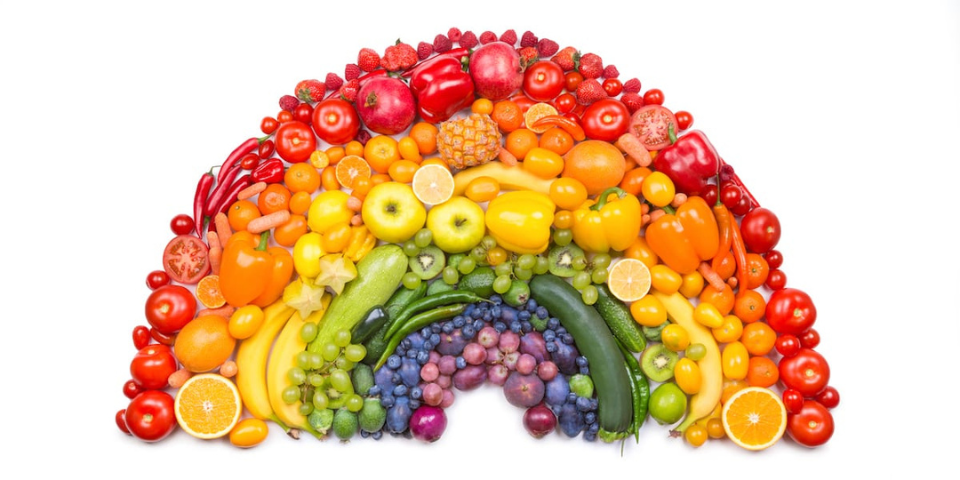Let’s make one thing clear right away: There is no number-one healthiest fruit. If you’re looking to stock up on the healthiest fruit to eat, diversify both your palate and your palette.
“In general, the greater the variety of colors of the fruit you eat, the greater the health benefits due to various nutrients represented by each color,” says Sara Ryba, RD, CDN.
Some fruits do have standout qualities if you’re looking for something in particular; in the world of fruit, there is a clear champ when it comes to potassium or fiber content, for example. But fruit, no matter which one it is, deserves a place on your plate, and you’ll give your health the biggest boost by pulling from across the entire rainbow.
That’s one of the many reasons Dana Hunnes, Ph.D., RD, MPH, senior dietitian at Ronald Reagan UCLA Medical Center, says, “People should not be afraid of eating fruit.” And if you don’t have access to the more exotic fruits, you can still get a range of colors and nutrients with the more common ones.
“If the only fruits you can get your hands on are apples, bananas, or oranges, you shouldn’t be afraid to eat those,” Hunnes advises. “They’re still healthful and will still give you health benefits from antioxidants.”
Why You Should Eat the Rainbow
The color of a fruit (or vegetable, for that matter) is actually a hint from nature about its nutrient content. Fruit colors are the product of phytonutrients, plant compounds that are believed to have beneficial properties.
Red, orange, and yellow fruits, for example, often have beta-carotene, a phytonutrient with powerful antioxidant-like compounds that are believed to have the potential to combat damage done to our cells by free radicals.
They don’t always fall into tidy buckets, however. Some red produce, such as tomatoes, get their color from lycopene, which may benefit our skin health and protect against UV rays. Blue and purple fruits may get their color from anthocyanin, which also boasts antioxidant effects.
By eating a wide range of fruits, you help ensure that you get a variety of these important phytonutrients. But there’s more to fruit than these compounds.
Below we’ve outlined some of the top benefits of each fruit — noting where each satisfies at least 10 percent of your daily value (DV) of a key nutrient — so you can cobble together a well-rounded shopping list.
1. Pomegranate
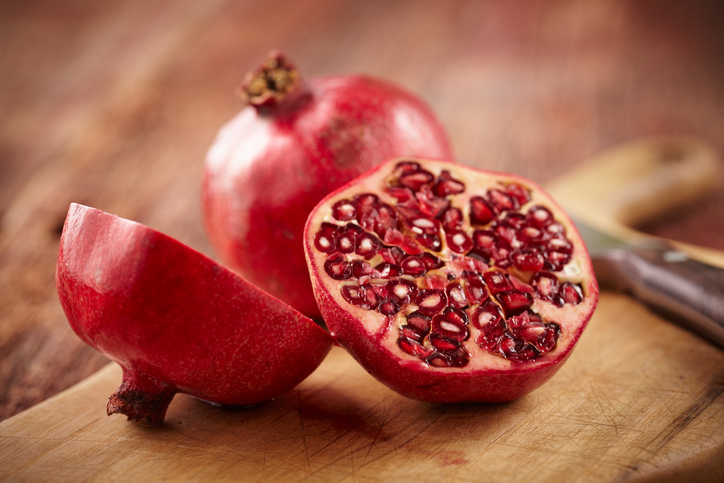
Top benefits (½ cup of seeds):
- Vitamin K (17% DV)
- Vitamin C (10% DV)
- Fiber (12% DV)
Carbs: 3 g fiber, 12 g sugar
Pomegranates have an amazing resume with many benefits. They deliver potent, antioxidant-like compounds called punicalagins in their juice while the oil pressed from pomegranate seeds has been studied for its content of a type of healthy fatty acid called conjugated linoleic acid.
2. Cherries
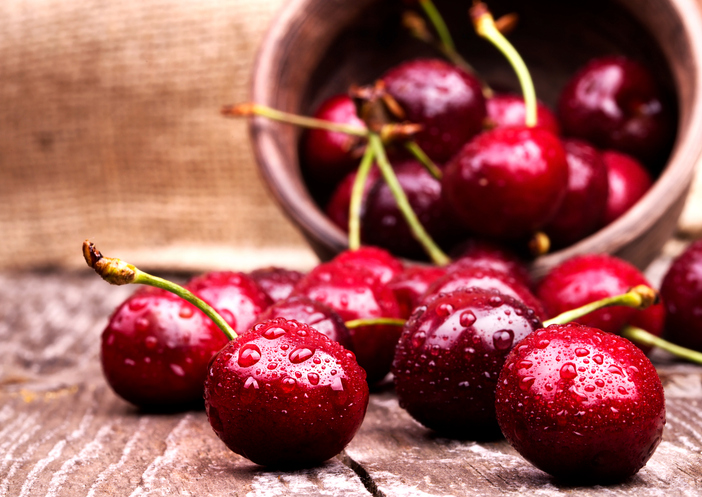
Top benefits (1 cup with pits):
- Vitamin C (11% DV)
- Fiber (12% DV)
Carbs: 3 g fiber, 18 g sugar
Hunnes says cherries with the darkest shade of scarlet are likely higher in antioxidants and polyphenols. Diets rich in these plant chemicals may benefit your cardiovascular system and metabolic health.
3. Cranberries

Top benefits (1 cup, whole):
- Fiber (15% DV)
- Vitamin C (16% DV)
- Manganese (13% DV)
Carbs: 4 g fiber, 4 g sugar
One of the primary health benefits of these tart berries is their phytonutrient content, flavonoid polyphenols in particular. But the concentration of these health-boosting compounds is greatly diminished in juice, so create your own jellies year round!
4. Raspberries
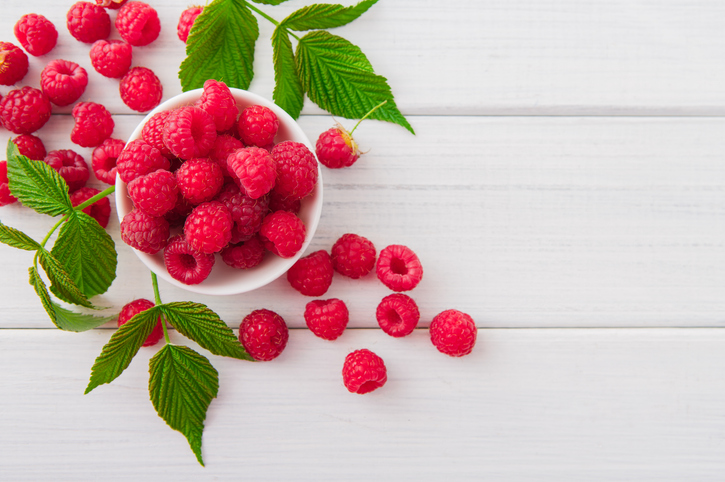
Top benefits (1 cup):
- Fiber (25% DV)
- vitamin C (36% DV)
- manganese (35% DV)
Carbs: 8 g fiber, 5 g sugar
In addition to containing antioxidant-like compounds, the humble raspberry is also very high in fiber. And because they’re also relatively low in sugar, raspberries make for a solid snack choice.
5. Pink grapefruit
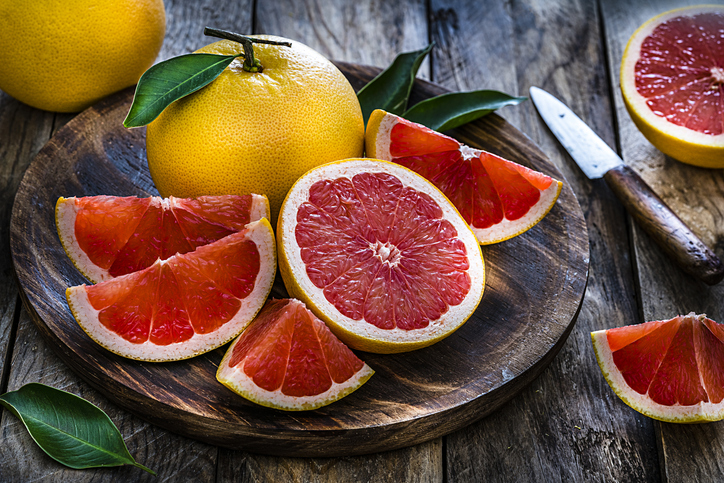
Top benefits (1 fruit):
- Vitamin A (40% DV)
- Vitamin C (98% DV)
- Fiber (12% DV)
Carbs: 3 g fiber, 18 g sugar
Although the grapefruit diet trend was ill-advised, there is science behind the idea that keeping this citrus fruit in your dietary rotation may be a healthy addition to your daily regimen. Along with vitamins A and C and fiber, grapefruits contain potassium, which is a key electrolyte necessary for maintaining several bodily functions.
6. Papaya
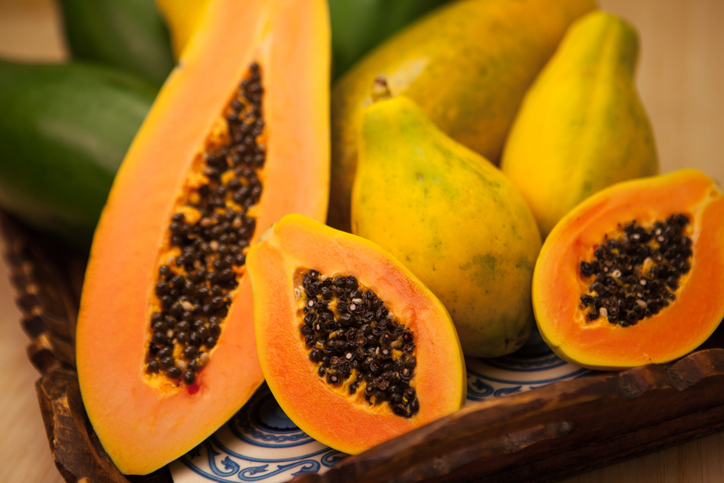
Top benefits (1 cup of one-inch cubes):
- Vitamin C (98% DV)
- Folate (13% DV)
- Digestive enzymes
Carbs: 2 g fiber, 11 g sugar
People worry about tropical fruits because they tend to be higher in sugar than their North American counterparts. But Hunnes assures that the calories and sugar are worth it. Especially papaya, which is not very high in calories or sugar compared to other tropical fruits, and also delivers enzymes that may be associated with healthy digestion.
7. Oranges
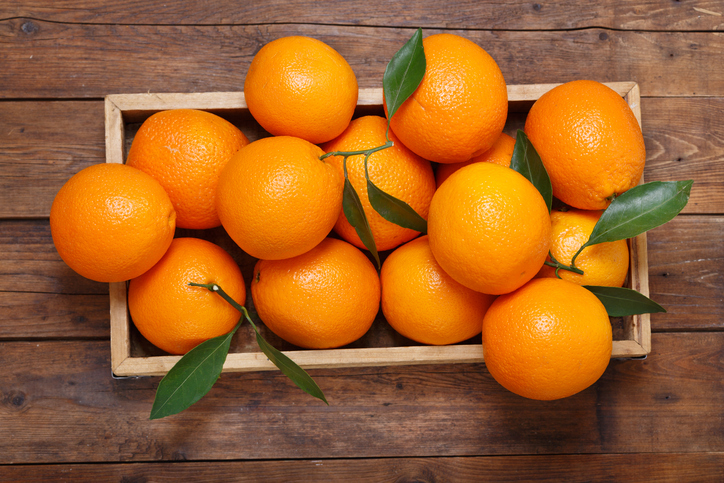
Top benefits (1 cup, sections):
- Vitamin C (>100% DV)
- Folate (13% DV)
- Thiamin (13% DV)
Carbs: 4 g fiber, 17 g sugar
Oranges have a great reputation for their vitamin C content, but they have lots of company in that regard; many fruits are rich in this micronutrient. Oranges also, however, supply a decent dose of thiamin, a.k.a. vitamin B1, which is critical for energy metabolism.
It allows our bodies to use carbohydrates for energy but is also involved in the proper functioning of nerve, heart, and muscle cells.
8. Apricots
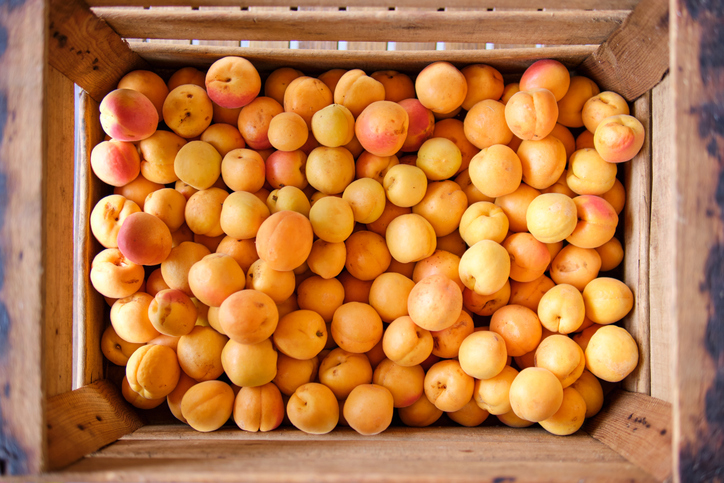
Top benefits (1 cup, halves):
- Vitamin A (17% DV)
- Vitamin C (17% DV)
- Beta-carotene (170 mg)
Carbs: 3 g fiber, 14 g sugar
To say apricots are rich in beta-carotene is a bit of an understatement. Just one cup of these tender fruits delivers 170 mg of this valuable phytonutrient. It’s suggested that adults and teens get between 30 and 300 mg daily and children get between 30 and 150 mg a day.
Your body eventually converts beta-carotene into vitamin A, which may be associated with healthy vision.
9. Banana
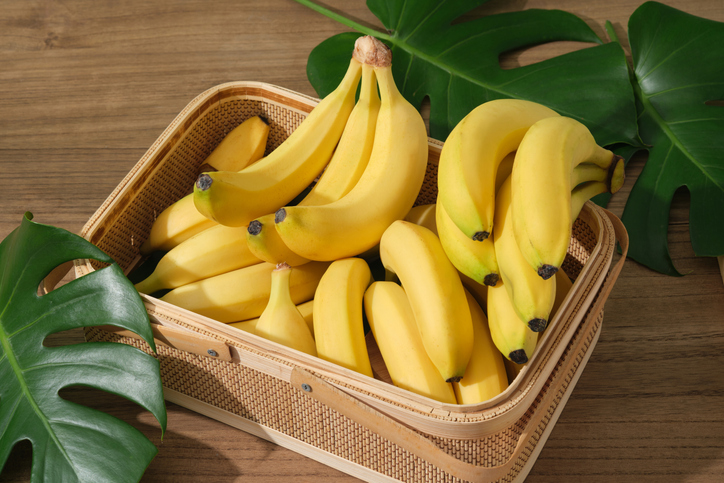
Top benefits (1 large):
- Vitamin B6 (27% DV)
- Potassium (10% DV)
- Fiber (16% DV)
Carbs: 4 g fiber, 17 g sugar
The potassium content in these grab-and-go fruits gets all of the attention, but bananas have a lot more going on. They’re also a good source of vitamin C, and when on the greener side, they’re packed with gut-friendly prebiotics. These compounds feed the healthy probiotics that are believed to be associated with healthy digestion.
10. Pineapple
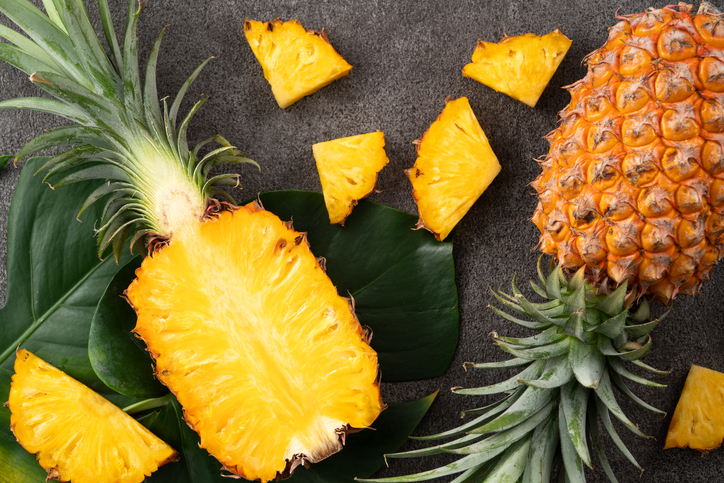
Top benefits (1 cup, chunks):
- Vitamin C (88% DV)
- Manganese (65% DV)
- Digestive enzymes
Carbs: 2 g fiber, 16 g sugar
Pineapple is positively overflowing with vitamin C, a principle antioxidant that is believed to be associated with healthy immune function and healthy skin. Perhaps even better, this tropical fruit contains enzymes that are believed to aid digestion.
11. Lemon
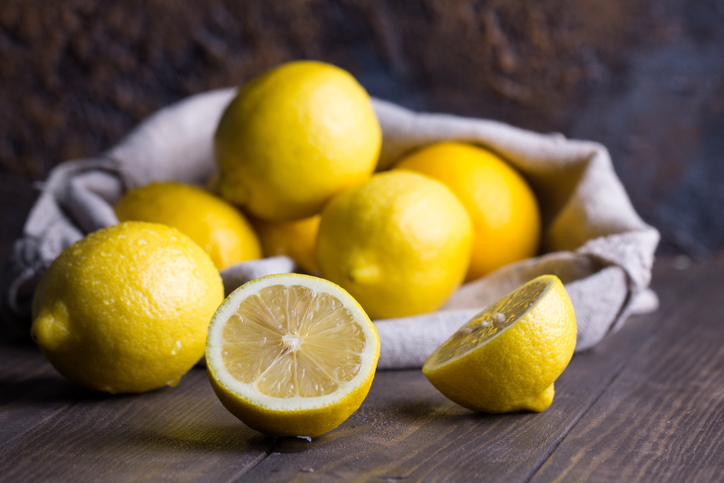
Top benefits (1 cup, sections):
- Vitamin C (124% DV)
- Fiber (22% DV)
- Iron (10% DV)
- D-limonene
Carbs: 6g fiber, 5 g sugar
Although there’s no proof that hot lemon water helps shed fat (sorry), it may help with healthy digestion. Lemon peels contain D-limonene, which is believed to relieve acid indigestion because of its gastric acid neutralizing effect and support of normal peristalsis. (That’s the wave-like action of gastrointestinal muscles moving food through the digestive tract.)
And we don’t have to tell you that, as a citrus fruit, the humble lemon is a knockout when it comes to delivering vitamin C.
12. Kiwi
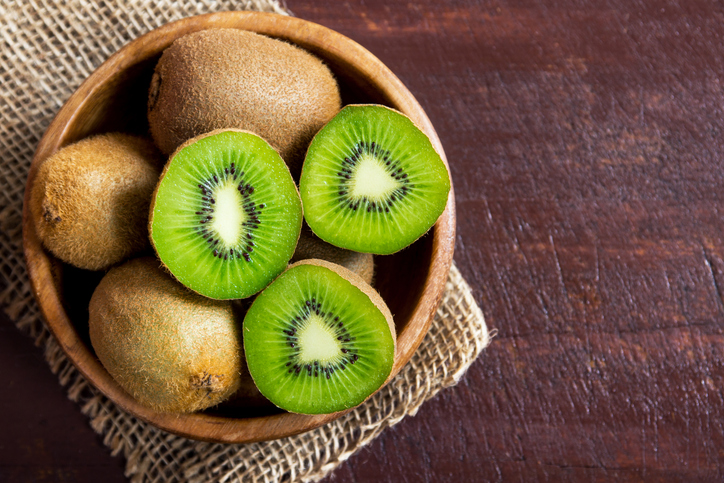
Top benefits (1 cup):
- Potassium (12% DV)
- Vitamin C (182% DV)
- Vitamin K (59% DV)
- Fiber (20% DV)
Carbs: 5 g fiber, 16 g sugar
Known also as Chinese gooseberry, the furry, tropical kiwifruit is packed with nutrients. But one standout is its concentration of vitamin K, which is believed to be an important nutrient for blood clotting and bone health. Kiwi provides over half of your daily intake in a single serving.
13. Avocado
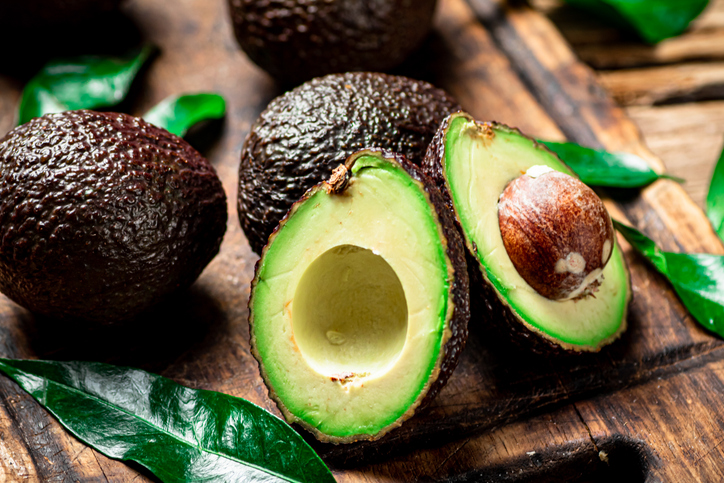
Top benefits (1 cup, cubes):
- Fiber (35% DV)
- Folate (30% DV)
- Potassium (16% DV)
- Vitamin K (26% DV)
- Oleic acid (a heart-healthy fatty acid)
Carbs: 10 g fiber, 1 g sugar
This beloved fatty fruit is actually a berry. Though it differs from its berry cousins in that roughly 80 percent of its calories come from healthy fat, it shares the same high-fiber content. Most of the avocado’s fat comes from the monounsaturated fat oleic acid, the same heart-healthy fatty acid found in olives and olive oil.
14. Honeydew melon
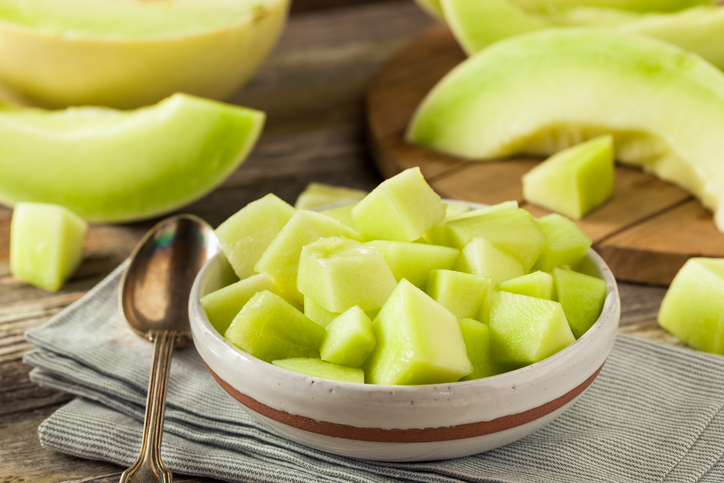
Top benefits (1 large wedge, or 1⁄8 of a melon):
- Vitamin C (75% DV)
- Folate (12% DV)
- Potassium (16% DV)
Carbs: 1 g fiber, 13 g sugar
Potassium is a mighty mineral abundant in honeydews that helps support healthy blood pressure already within the normal range, aid normal growth and development, and assists in maintaining proper fluid balance — not to mention that it’s key in muscle contractions, including those governing your heartbeat.
It also contains folate, which is especially important for women who are pregnant, or looking to become pregnant as it is believed to help prevent neural tube birth defects.
15. Blueberries
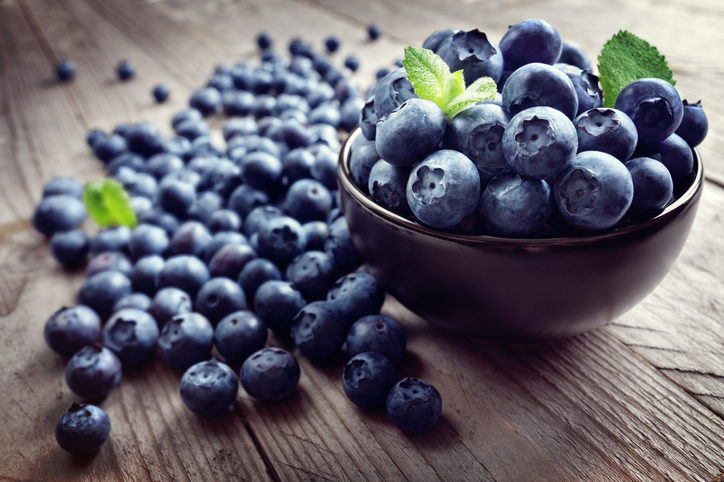
Top benefits (1 cup):
- Vitamin C (16% DV)
- Vitamin K (24% DV)
- Fiber (15% DV)
Carbs: 4 g fiber, 15 g sugar
Hunnes notes that the appearance of blueberries on this list shouldn’t surprise anyone. “They contain anthocyanins and antioxidants, as evidenced by their super dark color,” she explains. “They also have a lot of fiber and few calories per serving because they’re high in water content.”
Plus, this nutrient-packed fruit is versatile. Blend it into smoothies, use it as a topping for yogurt or even your lunch salad, or just throw a handful in a bag for a snack on the go.
16. Pluots (or plumcots)
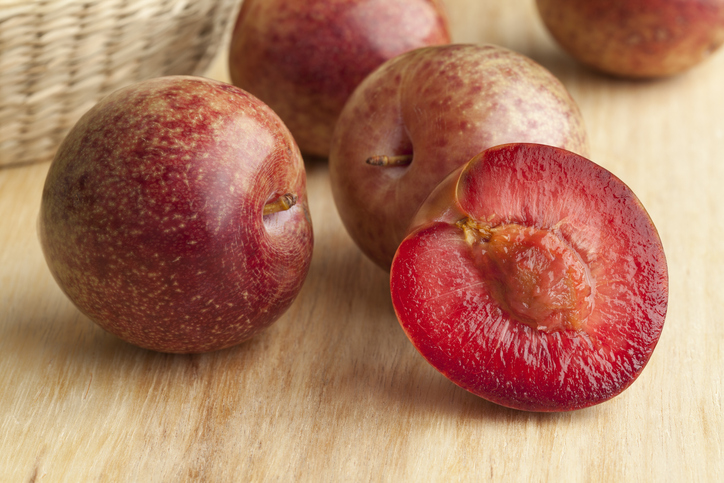
Top benefits (2 pluots):
- Vitamin A (10% DV)
- Vitamin C (15% DV)
Cabs: 2 g fiber, 15 g sugar
This combination of the plum and apricot wins top marks from Hunnes as well thanks to its antioxidant-like compounds. Look for fruits with a deep, dark red color for the most potent hit of these nutrients, which are believed to help reduce oxidative stress.
17. Blackberries
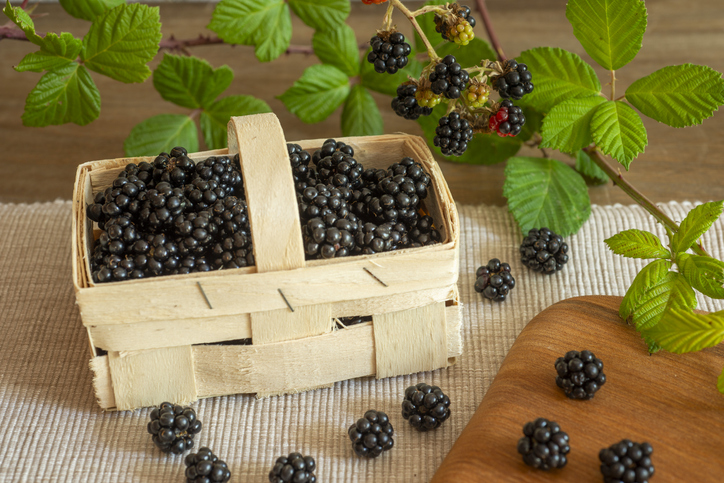
Top benefits (1 cup):
- Fiber (29% DV)
- Manganese (40% DV)
- Vitamin C (34% DV)
- Vitamin K (24% DV)
Carbs: 8 g fiber, 7 g sugar
By now it’s clear that deep-red berries are a nutritional winner. But the blackberry, in particular, is high in manganese, which is believed to be essential to the formation of collagen. It shares a lot of the same nutritional benefits as vitamin C, in which these bright berries are also abundant.
18. Figs
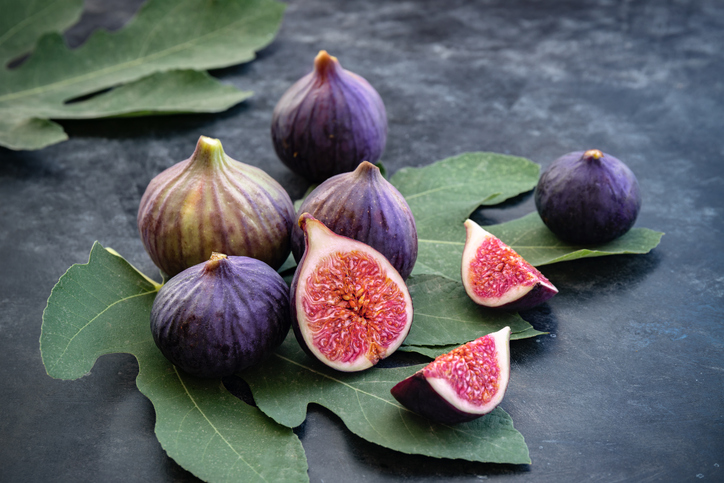
Top benefits (3 medium fresh figs):
- Vitamin B6 (10% DV)
- Fiber (14% DV)
Carbs: 4 g fiber, 24 g sugar
This Mediterranean staple doesn’t get the attention it deserves. Not only does it offer the above nutrients, dried versions also contain antioxidant-like compounds. Researchers have highlighted figs in particular as among the best dried fruit sources for these compounds, which research suggests may help to reduce damage caused by free radicals.
